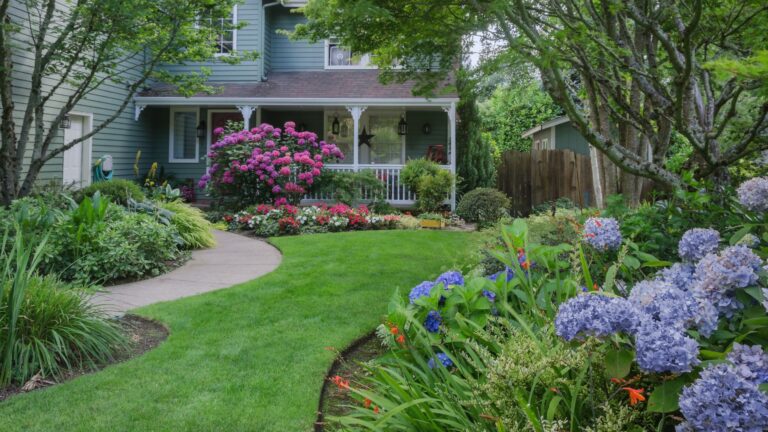Spring is the perfect time to get a jump start on your landscaping. It’s when you can enjoy all the benefits of outdoor living, such as entertaining friends and family in your backyard. Plus, it’s when plants begin to grow and bloom again after the long winter season. Here are some essential spring landscaping tips for your yard.
Fertilize Your Lawn
The first thing you’ll want to do is fertilize your lawn. However, it’s helpful to test your soil’s pH levels to determine what kinds of nutrients it needs. You can then select an ideal fertilizer that meets those requirements. Using a slow-release fertilizer helps encourage nutrient uptake by the grass and ensures that the nutrients release in the soil over an extended period. It’s also important to consider adding organic materials, such as compost or manure, to provide additional nutrition for your lawn.
Add Fresh Mulch
After fertilizing, you can add fresh mulch. It’s important to consider how much to use and where to place it. Two inches of mulch is enough to protect plants from weeds while still allowing adequate airflow around them. It’s also best to avoid putting mulch directly against tree trunks or stems, which can cause rot and disease in the plant material. When deciding where to put the mulch, follow a pattern that allows easy mowing and trimming access along walkways or other areas with frequent foot traffic.
Inspect the Irrigation System
Once you’ve determined your soil needs and applied the appropriate fertilizer, you need to inspect your irrigation system carefully. This process should include de-winterizing the system to ensure all its components are in good working order. Look for any damage or debris that the winter weather has caused, as this can impede water flow and result in inefficient watering patterns or even flooding if you don’t address it. Then, you’ll want to set up a watering schedule for your plants and lawn.
Design Your Spring Landscape
And now for the fun part: landscape design. There are several helpful tips for planning your landscaping design. Consider what kind of environment you want to create, whether a vibrant flower garden or a lush green lawn. Then, pick out some varieties that’ll fit your vision. For example, if you live in an area with hot summers, opt for heat-tolerant perennials, such as lilies or daylilies. If cooler temperatures prevail where you live, consider planting pansies or primrose instead. You can add hardscaping elements, such as stone pathways or outdoor seating areas, and incorporate water features, such as fountains. These can create a peaceful ambiance.
Now you can use these yard landscaping tips for the spring season in your own yard. Be sure that you understand the specific needs of your plants and flowers so that you can give them the best possible care.

